
AASTMT supports sustainable water extraction on its campuses through several key initiatives. On the Abu Qir campus, the Academy extracts groundwater from borehole wells primarily for irrigation, ensuring sustainable use of resources. This water is carefully monitored and treated using advanced techniques like nanotechnology to improve water quality. Additionally, AASTMT utilizes solar-powered systems to operate water pumps, integrating renewable energy into its water extraction process. These initiatives align with SDG 6 by promoting efficient water use and improving overall sustainability in water resource management.
Strengthening Groundwater Quality and Sustainable Water Management at AASTMT to Advance SDG 6
Before 2024, AASTMT launched a comprehensive groundwater enhancement project to address growing water demand and rising pollution pressures. Beginning in 2021, the project focused on improving groundwater quality in the Abu Qir campus through continuous monitoring of 13 boreholes, assessing physical, chemical, and biological parameters across all seasons. The Academy introduced innovative nanotechnology-based treatment to upgrade groundwater for irrigation and drinking, while also working to reduce contamination from sewage leakage, excessive fertilizers, and industrial waste. By 2022–2023, AASTMT installed a solar-powered pumping and nano-filtration system to ensure cleaner, more sustainable water extraction that supports reliable irrigation and safe water use. These steps strengthened water quality management practices and contributed directly to the goals of clean water, sanitation, and sustainable resource use.
Based on 52 samples from the same 13 wells across the four seasons of 2022, the results showed clear seasonal variations in groundwater quality: winter demonstrated the best overall values due to rainfall dilution, with low Sodium Adsorption Ratio (SAR) and more favorable Kelly Ratio (KR) readings. However, during summer and autumn, the absence of rainfall and higher evaporation rates caused several indicators—such as Residual Sodium Carbonate (RSC), sodium percentage (Na%), magnesium hazard, and potential salinity—to rise significantly, pushing the water into moderate to poor quality categories for irrigation. Despite these fluctuations, the Permeability Index (PI) remained within the suitable range throughout all seasons, indicating that soil permeability is not severely affected. The monitored changes highlight how climatic conditions influence groundwater composition and reinforce the importance of continuous treatment, nano-filtration technology, and solar-powered pumping to stabilize water quality and ensure safe, sustainable use for both irrigation and drinking at the AASTMT campus.
The amount of underground water extracted for the year 2023-2024 is 110000 cubic meters.
Strengthening Groundwater Quality and Sustainable Water Management at AASTMT to Advance SDG 6

AAST extracts underground water for irrigation by utilizing a series of borehole wells that tap into the groundwater reserves beneath the campus of Abukir. These wells are strategically drilled to access water from aquifers, ensuring a sustainable supply. Water is extracted through deep wells using mechanical drilling, and submersible pumps are used to extract the groundwater which is used for irrigation and landscaping purposes instead of drinking water. The amount of underground water extracted for the year 2022-2023 is 115000 cubic meters.
.png)
Update of Monitoring, Assessment, and Innovative Treatment Technology to Enhance Groundwater Quality for Irrigation Toward Climate Change Adaptation
This project started in 2021 as an AAST funded project aiming to tackle the growing demand for clean water due to population growth and increasing water pollution by focusing on enhancing the quality of groundwater for irrigation and drinking purposes. It involves the regular assessment of the physical, chemical, and biological properties of groundwater from 13 boreholes at AASTMT, located in Abu Qir, Alexandria, to monitor water pollution and its relationship with climatic changes and environmental factors. To improve the usability of this groundwater, the project utilizes innovative nanotechnology for water treatment, ensuring the water meets the required standards for safe drinking and irrigation in arid regions. Additionally, the project aims to mitigate pollution from sources such as unsanitary sewage disposal, over-fertilization, and industrial waste, ensuring the sustainability of groundwater resources.
In 2022-2023 a complete design and installation of solar photovoltaic (PV) system to power the water pumps is carried out. This system is designed to lift water from a well and channel it through a four-stage nano-filtration system to ensure water purity for various applications, including cultivation and drinking which is used in AAST campus in Abukir. This system provides a sustainable and efficient solution to meet water needs, utilizing solar energy and renewable energy requirements to achieve high efficiency and reliability in water treatment.
For more information, and details on the project
Monitoring, Assessment, and Innovative Treatment Technology to Enhance Groundwater Quality for Irrigation Toward Climate Change Adaptation on AASTMT webpage
.png)
.png)
Pilot Projects Employing Sustainable Sources: (2022-present)
Development of an automated and mobile water treatment system using solar-powered reverse osmosis to provide and deliver water to arid and remote areas in Egypt. The desalination unit produces between 1.5 to 3 liters per minute, depending on the salinity of groundwater. This system desalinates water using PV system as a sustainable source of energy
Pilot Projects Employing Sustainable Sources on AASTMT webpage
.png)
Monitoring, Assessment, and Innovative Treatment Technology to Enhance Groundwater Quality for Irrigation Toward Climate Change Adaptation
The project at AASTMT - AbuQir Campus addresses growing concerns about increasing pollution in aquatic resources and climate change affecting freshwater quality. This is particularly crucial for drinking, the food industry, and irrigation. Focusing on groundwater as a potential solution, especially in arid regions where it is the primary source, the project aims to enhance the irrigation and drinking water quality from 13 borehole ground wells at Abu Qir Campus, near Alexandria City's eastern shore. The project involves collecting and analyzing physical, chemical, and biological water samples to assess pollution regionally and temporally, correlating findings with environmental and climatic conditions. Nanotechnology will be employed to improve water quality. The AASTMT has fully funded the project, emphasizing the main objective of enhancing water quality through seasonal water sampling and subsequent improvements. The main objective of the project is:
The quality of water for irrigation is determined by the concentration and composition of dissolved elements. Assessing salinity or alkali conditions in irrigated regions requires careful evaluation of water quality. Key factors influencing the quality of irrigated water include total soluble salts (TDS), sodium adsorption ratio (SAR), chemical concentrations of potentially toxic elements like Na+ and Cl-, and the presence of residual sodium carbonate or residual alkalinity (RSC or RA). Post-treatment results indicate a significant improvement in water quality, making it suitable for irrigation purposes.
Currently, a renewable, innovative & integrated water treatment unit is being developed to power a three-phase pump, serving the dual function of lifting water from a well and subsequently channeling it through a state-of-the-art four-stage nano-filtration system, thereby ensuring its purity and suitability for various applications, including cultivation and drinking.
For more information, and details on the project
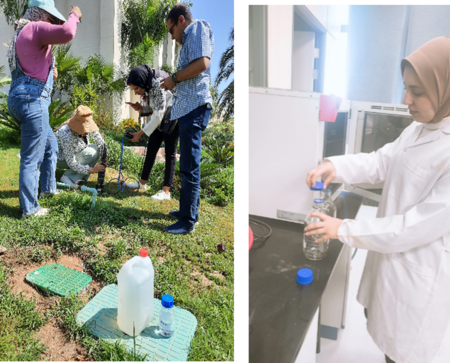

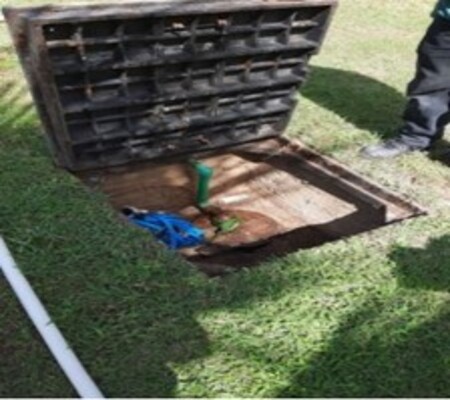
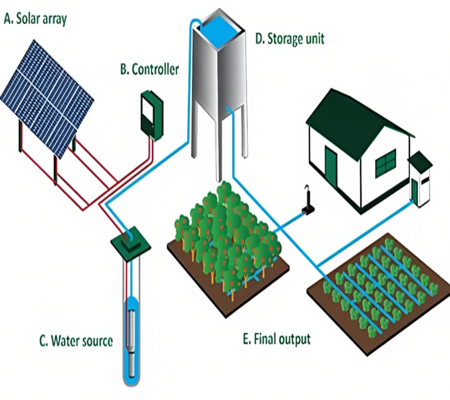
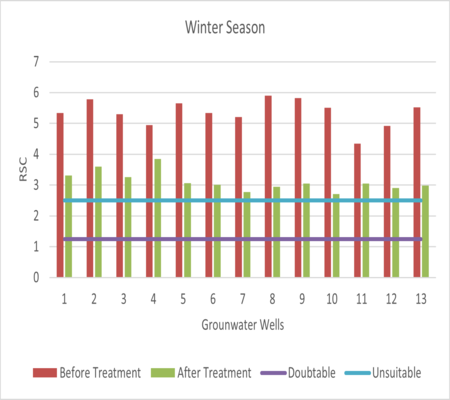
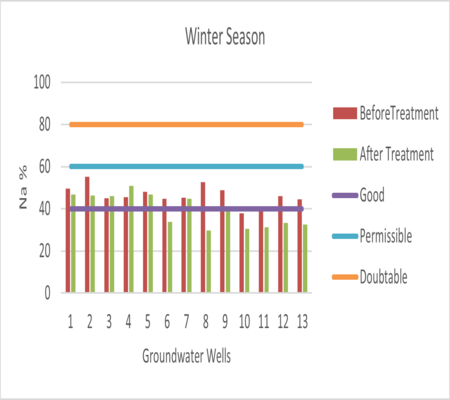
Aquaculture Research Center (2010- present)
The Aquaculture Research Center aims to pioneer new development projects in aquaculture by addressing scientific problems and providing tailored solutions. The center focuses on three integrated tasks: water, energy, and food.
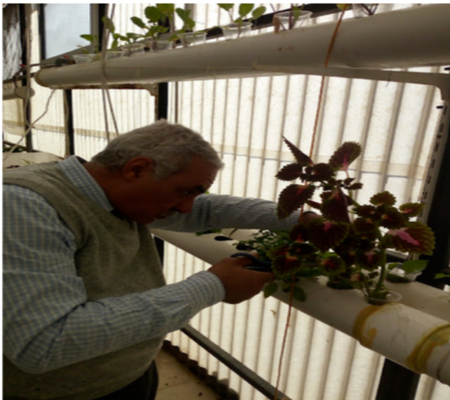
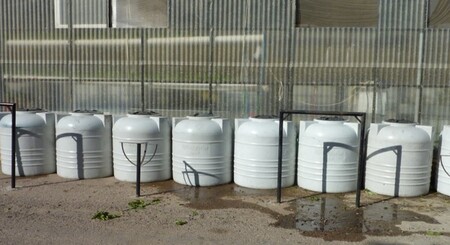
Environmental Research Facilities at AASTMT (2021-present)
The Environmental Monitoring, Modelling, and Training Research Facilities at AASTMT are advanced and fully- equipped facilities dedicated to a comprehensive study of environmental, energy, and climate change research parameters. Underground, postgraduate Students and faculty researchers conduct rigorous research in the sampling, analysis, and data interpretation. It fosters collaboration with national and international research institutions, government bodies, and industry stakeholders to encourage information exchange, generate solutions to global environmental issues, and promote sustainable practices within and beyond the AASTMT community. They carry out all environmental research studies and consultations as well as training. Sustainability has been at the heart of the Arab for a very long time. Our 2021-2026 strategic plan has dedicated one of its four main goals to sustainability, where The AASTMT commits to fulfill its societal responsibility and aligning itself to the SDGs. The research facilities support wastewater analysis and water quality studies. Some of the equipmet present:
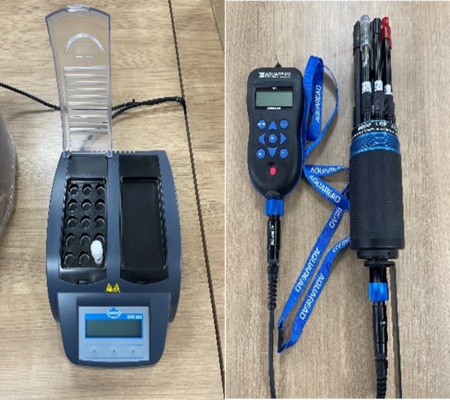

Implementing New Irrigation Systems (2021)
President Professor Dr. Ismail Abdel Ghaffar Ismail Farag visited the agricultural plant nursery at the main campus of the Academy in Abu Qir to assess progress and recent developments. During the visit, he inspected newly added plants, as well as new irrigation systems implemented in the general area and new agricultural greenhouses. The President commended the nursery team for their efforts, especially in adopting modern agricultural and irrigation techniques. He expressed hope for continued efficiency and adherence to modern methods in their work.
Explore the The AASTMT New Irrigation Networks
